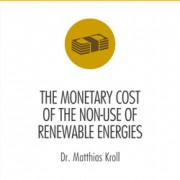Debt and Asset: From a Macroeconomic Perspective
Abstract
The model of a thrifty housewife as the prototype of sustainable domestic bookkeeping is a familiar one. Indeed, the thrifty housewife does everything correctly when she takes care not to spend more than she earns, thus ensuring she does not live above her means. The situation, however, becomes more difficult when many households follow the same rule. In the national economy as a whole, the thrifty housewife can only succeed in her model of living if at least some other households spend more than they earn and become indebted, i.e. live above their means.
Each household can only earn interest on its savings if another economic sector borrows money and becomes indebted but at the same time makes enough profit with the borrowed credit to service the interest and repayment costs. If this is not the case no interest can be generated. The amount of financial assets of one side is always exactly the same as the debt of the other side.
Looking at this from a global perspective, a country can only reach an export surplus if at least one other country has a matching deficit. The attempt of all countries to achieve a surplus simultaneously will fail because the trade balance sheet of the global economy is always zero.










